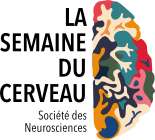Most of mental health problems appear in adolescence. During this period of existence, the diagnoses psychiatric illnesses are on the rise, with adolescents not only suffering from mood disorders such as the Depressionbut also psychiatric illnesses such as schizophrenia or obsessive compulsive disorder (TOC).
The impact of these diseases is considerable: suicide is one of the five most common causes of teenage deaths.
Researchers in Mental Health have long been aware of this fact. However, they still struggle to understand its origin. The reasons for this adolescent vulnerability remain unexplained. The lack of information about how the brain changes at this time of life could explain these gaps. In an attempt to fill them, my colleagues and I recently undertook research based on the follow-up, over several years, of a group of adolescents. We were able to assess not only how their brains developed during this period of their existence, but also the link between this development and the evolution of their mental health.
brain changes
Until a few decades ago, it was thought that the brain only developed during childhood and that it didn’t change much afterwards. However, new brain imaging studies have demonstrated that the brain continues to mature beyond childhood. Those changes continue actually until their twenties or even their thirties.
In adolescence, the matter Gray matter (made up of nerve cells) slowly shrinks, while white matter (the wiring between nerve cells) continues to grow. These brain changes are a reflection of the reorganization of neural networks, which refine their functions and connections, shedding what is irrelevant and enhancing what is important.
Scientists believe that the growth of myelin (the fatty substance that providesinsulation of the connections established by the nerve cells between them and which improves the transmission of information) constitutes a determining factor of these brain changes.
These changes are indeed more important in certain regions of the brain than in others, in particular in those which house the higher cognitive functions (such as language or consciousness). the prefrontal cortex, in particular, undergoes the longest development: it continues until the twenties. It is in this region of the brain that are located the most sophisticated of our skills – from making complex decisions to predicting and controlling unwanted impulses.
In other words, to adolescence, many of these sophisticated brain functions are still under development. This could explain why adolescents sometimes struggle to implement complex reasoning skills, or why they act impulsively, taking unnecessary risks.
The prolonged development of the prefrontal cortex could also be the cause of the increase in mental health problems in these age categories. During our research, we found that myelin in the prefrontal cortex grows more slowly in adolescents who have more mental health problems. Those who were particularly impulsive showed reduced myelin growth in prefrontal brain areas often associated with impulse control.
What’s more, we found that this reduced myelin growth was directly linked to worsening mental health symptoms over time. During our study, we not only examined the average degree of impulsivity of adolescents, but also their specific evolution on the duration of this research.
Our results show that adolescents with the lowest impulse-related myelin growth rates in the prefrontal area were also those whose impulsiveness worsened the most during adolescence. This finding suggests that there is a close and dynamic association between the evolution of mental health and brain maturation.
Cognitive deficits
Interestingly, deficits in brain development seem to differ depending on the type of mental health disorder considered. adolescents with symptoms of OCD important, for example, also showed reduced growth of their myelin, in various areas of the prefrontal cortex – primarily those responsible for cognitive functions known to be impaired in OCD. This suggests that these cognitive deficits could result from impaired brain development.
It remains to be determined to what extent these results are extrapolated to the general population, and whether they can be used to predict (or, even, perhaps, prevent) theemergence mental health issues.
With this in mind, my colleagues and I have developed a application called Brain Explorer. Integrating the latest advances in neuroscience research, it allows us to address questions that we could not answer using traditional laboratory experiments.
Playing the games on this app should allow researchers to better understand how different brain mechanisms influence the way we think and feel. © BrainExplorer
The app features a series of games designed to probe specific brain functions, such as those involved in how we make decisions or our ability to reflect on ourselves. It does this by targeting areas of the brain most likely to be affected by myelin-related reduction in brain growth. This app also asks the user about his behavior and feelings, in order to follow the evolution of these functions during development.
Through this citizen science project, we hope to broaden our understanding of how the general population thinks and behaves, and overcome the limitations of laboratory experiments. In particular, we hope that this new data collection tool based on “crowd-sourcing” will allow us to reach groups of people who are too often underrepresented in research, but who nevertheless present a high risk of mental health problems, in especially adolescents from marginalized communities.
In addition to the workshops offered throughout France by the Society of Neurosciences, at the origin of Brain Week, Futura highlights the latest scientific advances concerning our ciboulot. Cognition, psychology or even unusual and extraordinary stories, a collection ofitemsof questions answers and of podcast to be found all this week under the tag ” brain week » and on our social networks!

Interested in what you just read?
